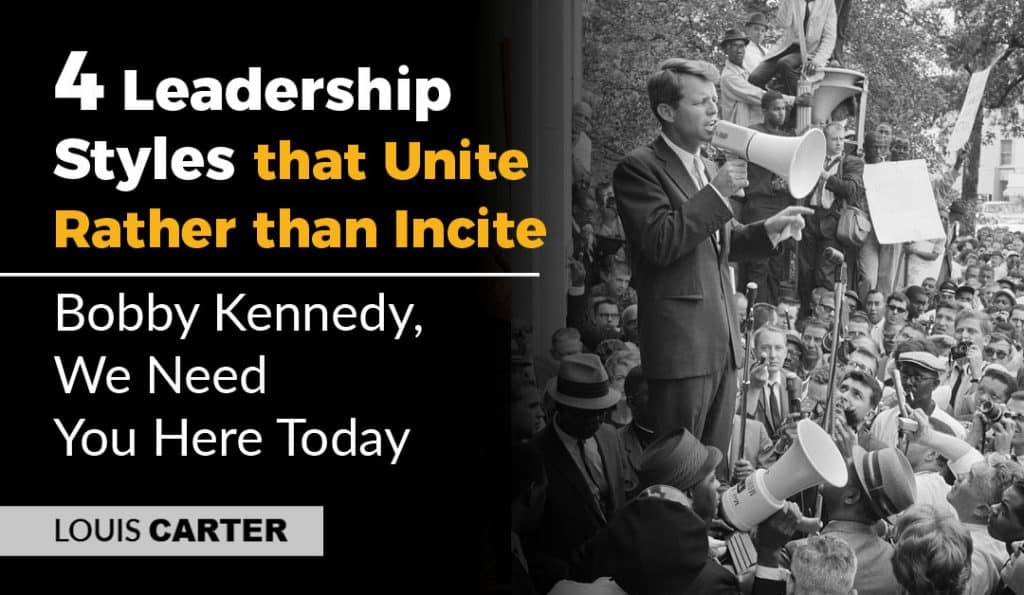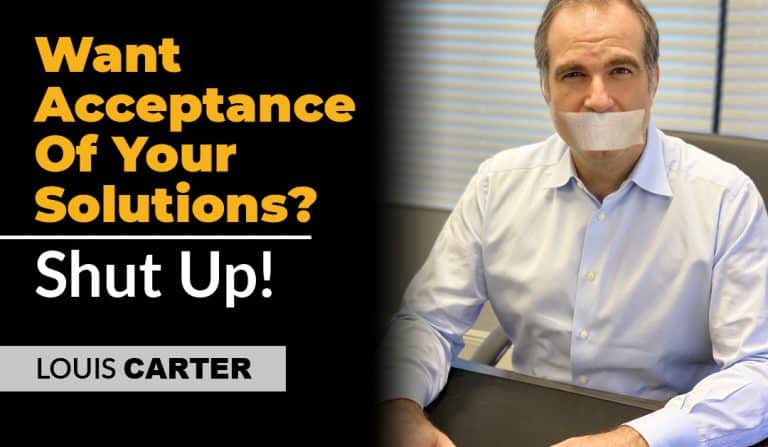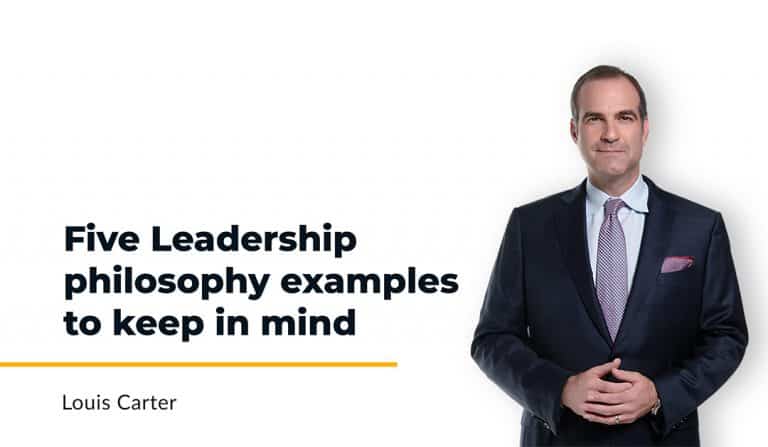We can learn a lot about the leadership style of Robert F. Kennedy, Jr. after the assassination of Martin Luther King, Jr. Instead of using force or a more direct approach to telling and selling non-violence, he used the leadership styles of servant leadership and transformational leadership. His transformational and servant leadership consisted of a powerful communication and facilitative style that begins with 1. Explanation of what has happened (Assassination of Martin Luther King, Jr.) , 2. Empathy (his brother was also shot by a white man), 3. Showing Possibilities (Let us come together to have communication and dialogue to do as the Greeks once said, “Tame the savageness of mankind,” and 4. Move forward together toward a better day.
Defining Robert F. Kennedy Leadership
Robert F. Kennedy used his heart, and mind; empathizing, connecting, and providing a better future for everyone. Through his impactful leadership style, Indianapolis, IN was the only city that did not break out into riots the night of Martin Luther King, Jr.’s assassination.
What we need now is not more division. What we need now is not more bloodshed, violence and coercion. What we need now is more emotional connection with those in pain. We must have the courage to step in with love, rather than hatred for those in pain. History has shown us since the Civil Rights Movement, murder of John F. Kennedy, murder of Martin Luther King, Jr., and the murder of Robert F. Kennedy and the thousands of other brutal deaths in the name of civil rights, that we must lead with an understanding of the unique psychology of groups, and individuals.
Leadership Style Competencies
The best leadership styles exhibit clear competencies:
- Empathetic Leadership Style: He exhibited empathy for those who feel injustice and feelings of uncontrollable anger by placing himself in their position, and showing how he responded to the death of his brother, also murdered by a white man.
- Emotional regulation Leadership Style: He modulated his voice in lower and calm tones, and through poetry and prose calmed fear and anger.
- Values Alignment Leadership Style. He used language which unites through common human beliefs – family, love, and forgiveness, that fight division and invite unification.
- Dialogic Leadership Style: He actively facilitated and set up dialogue groups throughout Indianapolis, IN that was designed to speak about the same principles of unification he proposed in his speech.
The Steps to the Robert F. Kennedy Leadership Styles
All of Robert F. Kennedy’s Leadership Styles leveraged the following steps:
1. Form: Show a better/more positive vision of the future,
2. Storm: Practice empathy and speak from your heart in a calm and caring manner so as not to incite violence
3. Create norms for social behavior that are based on listening, caring, and empathy; and
4. Perform by coordinating and facilitating peaceful discussion and dialogue. For more information on how to create peaceful dialogue see this article on how to create a Most Loved Workplace in Leader to Leader Journal.
Some storming processes are more brutal than others, as we have seen in recent history.
There are two methods of storming that have two very distinct outcomes. Riots cause death and destruction of property. Dialogue creates a newfound vision for a better future for all of humanity. Crowds listen very carefully to every word of their leaders. When leaders deploy a leadership style similar to Robert F. Kennedy, they are calm and present true love and empathy for humankind, it will tame any potential for danger and violence that may occur.
What Leadership Styles Incite Violence?
Some of the worst riots in history including the George Floyd riots have led to the death of multiple individuals, police officers, with numerous resignations, job losses, deaths and unconscionable emotional upset. Such examples include the 1992 Rodney King Race Riot, 1967 nationwide riots in most major US cities that led to over 100 deaths, and the 1968 riots following the assassination of Martin Luther King, Jr which were as widespread and deadly. And, the riots of 2020 which upended American businesses, and were the source of multiple deaths and injuries on a mass scale. Each of these riots were incited by leaders who deployed a non-empathic and dictatorial leadership style. In each of these cases fighting words such as “We will storm.” or “We will show them our strength” were used by riot leaders.
A more recent example of fighting words used to incite violence was used at the storming of Capitol Building on January 6th, 2021, which ended in the death of five people.”“Let’s have trial by combat.” Reference: NY1.
What can we learn from rioting behavior? Are there leaders who have taught us in history how to turn violence into opportunity? The second form of storming can happen when we introduce a different way of interacting without violence.
Instead, Robert F. Kennedy used empathetic, civil, considerate speech that is carefully worded, with a calming presence and voice. On April 4, 1968, on the eve of Martin Luther King assassination, despite concerns for his safety, Robert F. Kennedy gave an impassioned speech to call for dialogue instead of violence to a rally at 17th and Broadway in the heart of Indianapolis, IN. RFK invited compassion instead of violence, eloquently communicating the pain he felt when his brother, too, was killed by a white man.
We can move in that direction as a country, in greater polarization — black people amongst blacks, and white amongst whites, filled with hatred toward one another. Or we can make an effort, as Martin Luther King, Jr. did, to understand, and to comprehend, and replace that violence, that stain of bloodshed that has spread across our land, with an effort to understand, compassion, and love. – Robert F. Kennedy, Jr.
The leadership style of Robert F. Kennedy, Jr. was emulated by many politicians who were successful in peace negotiations that followed him. Senator George Mitchell spent several days in Ireland during the Peace Accords, working through the grueling emotional pain of those from North and South Ireland. I spoke with Senator Mitchell back in 1998. In my interview with Senator George Mitchell here, he told me that being with the people, and truly empathizing with their pain and working through the details of the pain is what brought the Ireland Peace Accords to consensus.
There are common denominators to requests for help, be it religion, neurodiversity, sexual orientation, race, color, gender or political beliefs. The common denominator is emotional pain for being marginalized and hated for differences. It is beyond the threshold of pain to be singled out due to our genetics, to be hurt, to be talked down to, to be discarded, to be disrespected.
This kind of behavior dates back in our memories to the schoolyard bully and back in history to the stone aged man dragging “his woman” by the hair. It is not to be tolerated, however, it must not be fought with any other weapon but dialogue, consensus building, empathy, caring, and moving toward a better and more understanding human right. The human right to be seen equal in the eyes of all.






